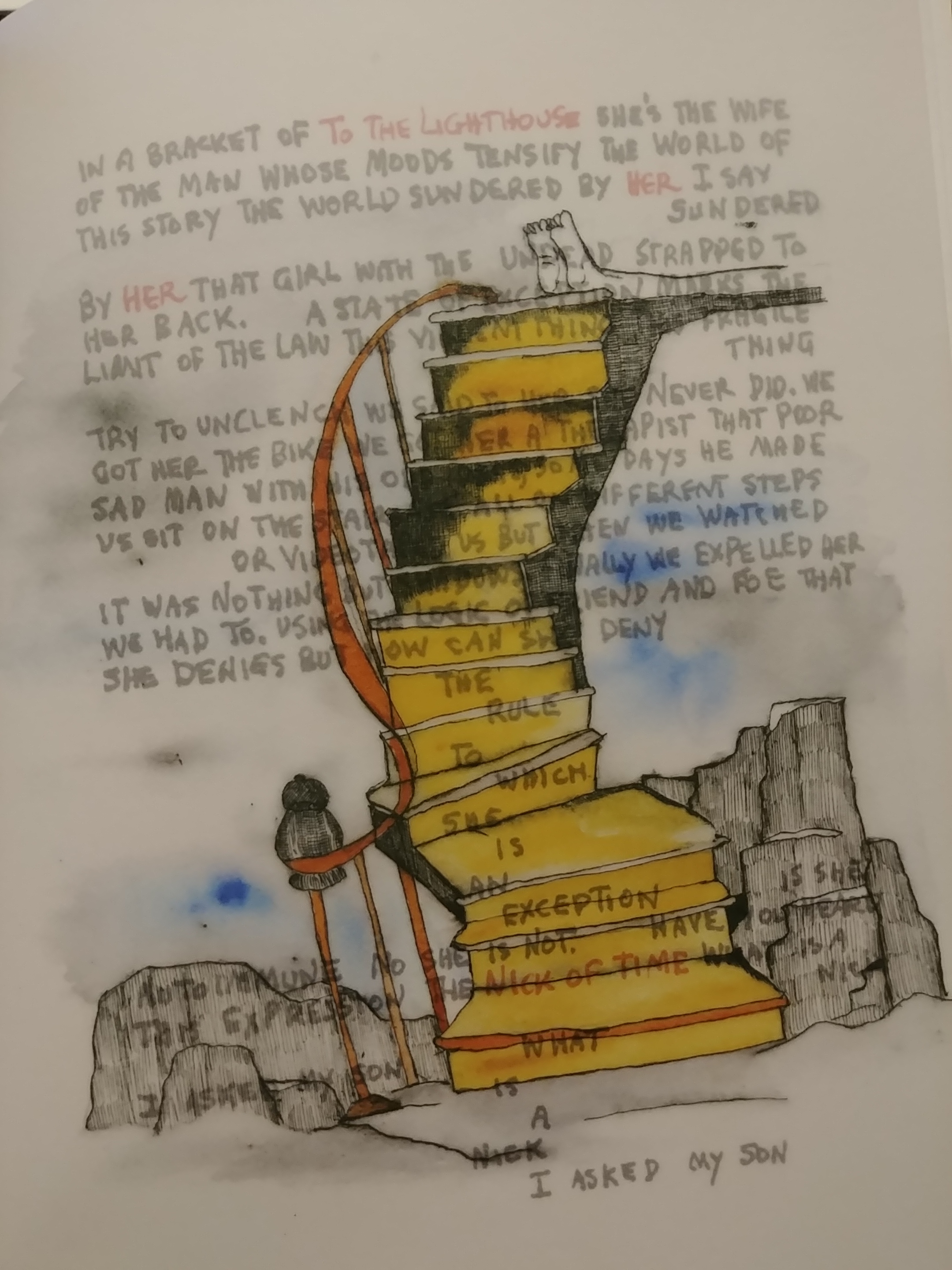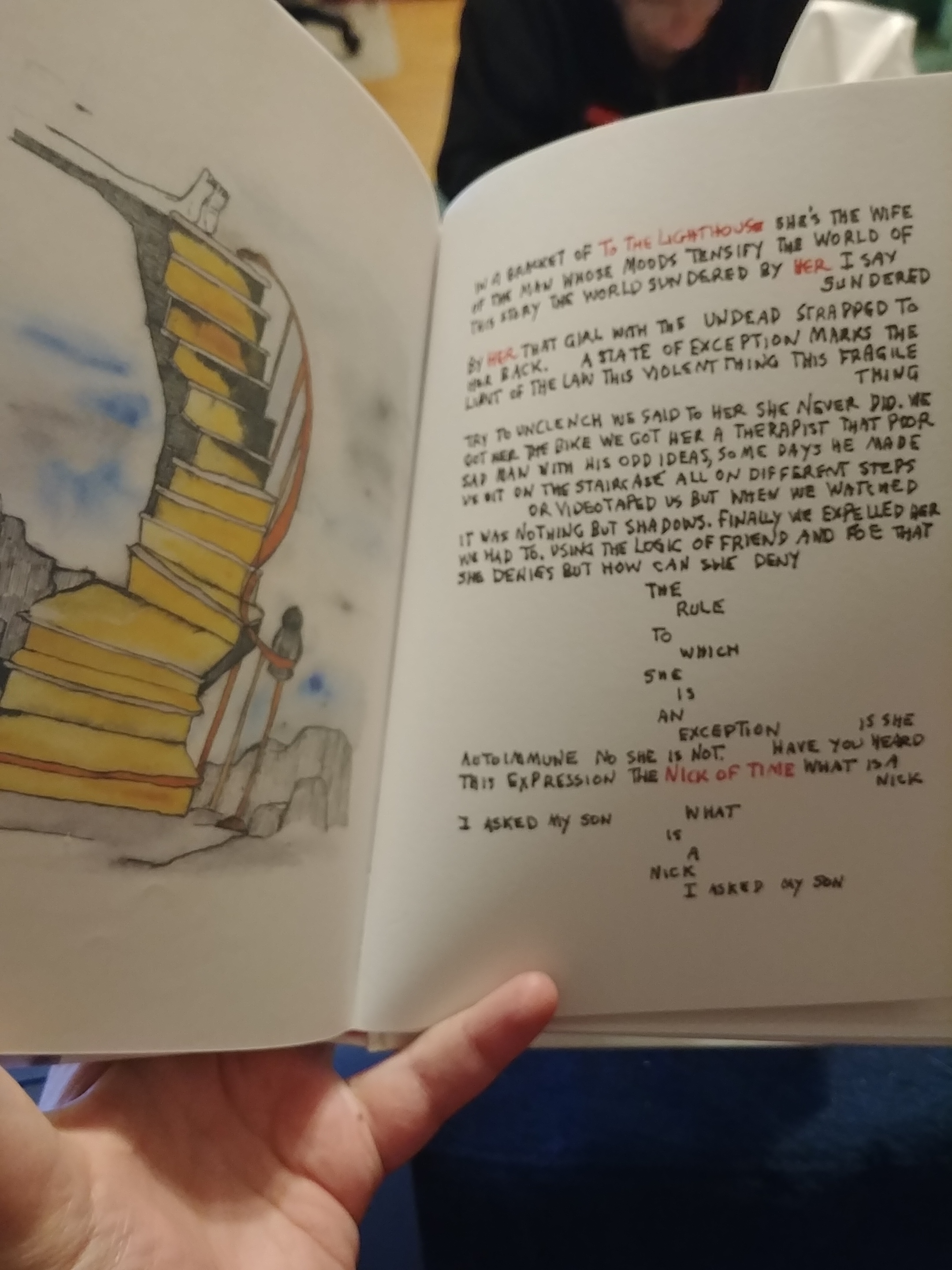Entry tags:
(no subject)
This is not actually the first time I'd come to this decision -- I took an Antigone class in college, there were a spate of Boston productions a few years back and I saw several of them, it's a story I know well and find meaningful in a variety of forms -- but the difference here is that this time I told
It's a really beautiful book, with illustrations layered over the text on translucent pages in a way that I found both fascinating and (intentionally I think?) distracting. It's extremely tempting to try and read meaning into the way the words and images interact in a layout like this:

(Here's what it looks like when you turn the page, with the image and text separated)

And it is absolutely possible that there are layers of artistic meaning in the arrangement of the book that a better scholar of art and poetry than me could spend hours happily investigating! But I it's equally possible that the illusion of meaning -- the consistent human urge to read patterns and philosophy into phenomena -- is part of the point. Antigonick is an intensely metatextual text, a constantly self-interrogating text; the weight of fate & gods-doom that hangs over the original becomes in Antigonick the weight of Antigone's own themes and narrative echoing down through centuries of time and translations, which does not make it any less painful, or less raw:


These couple of pages I think also illustrate a little bit the way in which Carson is just really a master at the art of juxtaposition to drive the knife home: I wish I had a better way to describe that targeted sharp use of the idiomatic-contemporary, which is so easy to overdo or do badly, and so effective when done well.
I probably should stop here or I will end up quoting much of the play. I am probably not now going to binge-reread a whole pile of Antigones, but the urge is there.